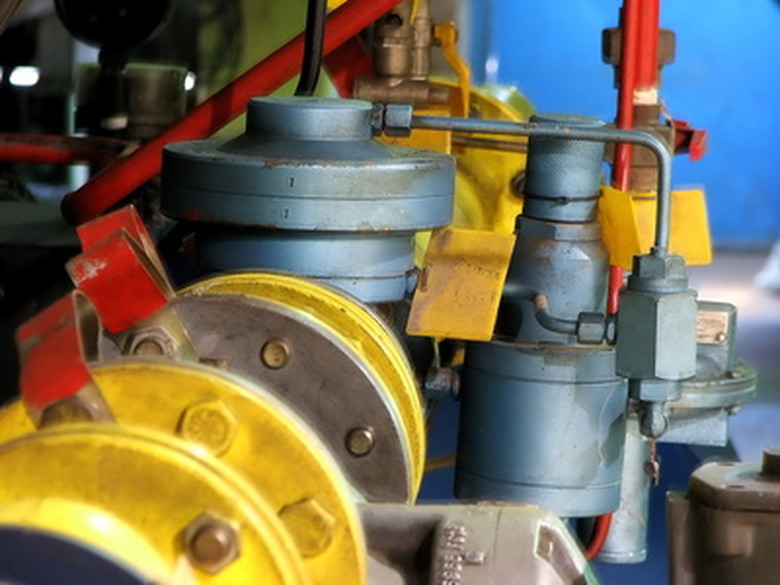How To Calculate The Beta Ratio Of A Flow Orifice
The orifice beta ratio calculation is used in hydraulics to determine the rate of flow in a pipe system. It can also help predict the length of a pipe needed in a project. It is a beginning step in a series of complex equations designed to measure a system's expansion factor, a phenomenon that could reduce velocity of pipe content due to gas resistance. Good orifice beta ratios (often between 0.2 and 0.8) allow accurate calculation of a pipe's flow rate.
Step 1
Determine the pipe's ID–the thickness of the pipe structure's wall. If unsure, ask a specialist. A retail pipe sales outfit might be able to assist you. The ID can also be referred to as the bore or standard. In the orifice beta ratio equation, the pipe ID will be represented by "d."
Step 2
Determine the diameter of the pipe. If the diameter of the pipe is not known, calipers can be used to give a rough estimate for later equations. In the orifice beta ratio calculation, the diameter will be represented as "D."
Step 3
Divide d by D, where "d" equals pipe ID and D equals the pipe diameter to get the orifice beta ratio, represented as beta. If the pipe ID is 2 and the pipe diameter is 8, the beta ratio would be 0.25 (2 / 8 = 0.25).
Things Needed
- Calculator
- Calipers (optional)
Warning
It's preferred to use the pipe stock measurements because imperfections in calipers can cause minute differences in the beta ratio. This may impair further calculations.
References
- "Optimal Flow Measurement: Understanding Selection, Application, Installation and Operation of Flowmeters Workshop Proceedings"; Instrumentation Testing Association; 2002
- "Gas Pipeline Hydraulics"; E. Shashi Menon; 2005.
Cite This Article
MLA
Doelder, Jonathan. "How To Calculate The Beta Ratio Of A Flow Orifice" sciencing.com, https://www.sciencing.com/calculate-beta-ratio-flow-orifice-7280588/. 24 April 2017.
APA
Doelder, Jonathan. (2017, April 24). How To Calculate The Beta Ratio Of A Flow Orifice. sciencing.com. Retrieved from https://www.sciencing.com/calculate-beta-ratio-flow-orifice-7280588/
Chicago
Doelder, Jonathan. How To Calculate The Beta Ratio Of A Flow Orifice last modified March 24, 2022. https://www.sciencing.com/calculate-beta-ratio-flow-orifice-7280588/
